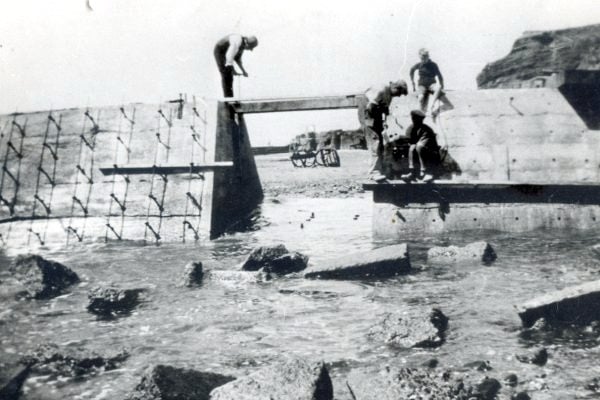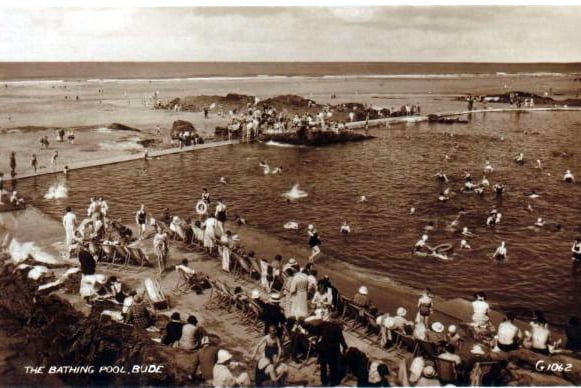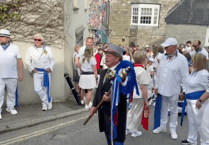For more than 90 years, residents and visitors to North Cornwall have been enjoying a refreshing dip in one of the area’s most iconic spots.
On July 10, 1930, Bude Sea Pool officially opened to the public, welcoming people to enjoy a safe way to experience sea swimming. However, what led to the creation of this much-loved destination?
Historically, exposure to sea water has been viewed as a benefit to one’s health, something which can be traced back generations. In the late 16th-century physicians across the country endorsed the healing effects of cold water. By the 18th-century loosely termed ‘water therapies’ had been developed to calm anxiety and sooth the body, and even into the 1860s, sea resorts remained popular for treating tuberculosis, despite limited evidence of their success.
During this time, Queen Victoria even enjoyed a trip to the seaside, not only for its charming views but also to enjoy the cleaner rural air. Prince Albert was a firm believer in the health properties of sea bathing.
Soon, due to trains making travel much easier, trips to the seaside were enjoyed by the working class as well as the upper classes.
Fast forward to the 1920’s and medical advice continued to advocate for the exposure to sea water, though now people were not only able to travel to the coast by train, they could also use a car.
However, this influx of visitors, many of whom had little understanding of the dangers of the Atlantic Ocean, meant that the numbers of deaths off the coast of Bude and its surrounding areas increased dramatically.
Several articles from newspapers at the time describe beachgoers drowning while bathing at Widemouth Bay.
An extract from the Cornishman, dated Wednesday, August 5, 1925, reads: “Two sisters, visitors to Widemouth, Bude, North were drowned while bathing on Monday.”
While only seven days later, the publication once again detailed the death of two men during their visit to the coast.
With drownings becoming more and more regular, local estate owners the Thynnes, decided to invest in a safe environment for the general public to take the waters. And so, work to create Bude Sea Pool got underway.
The family pledged just over half of the total budget, around £4,000, a sum which adjusted for inflation amounts to more than £200,000 today.
As well as this, they helped design the site, their only condition being that the amenity be free to everyone, irrespective of their income, so all can come and safely enjoy it.
Work to create the pool would have been back breaking. A man-made outer wall was sunk into the beach to create a natural foundation of concrete.
Workers would have had to contend with the daily change in tides, all building materials had to be transported across the beach to the pool site, and working hours would differ every day as work could not commence until the tide had left the work site.

Carts being used to transport building materials across the beach
There is some debate whether the construction also aimed to curb unemployment locally. An article dated January 5, 1929, in the Cornish and Devon Post suggests that this may have been the case.
It reads: “Among the schemes planned at Bude-Stratton during the coming year is the extension of the Urban District boundary in Poughill direction, to be followed by an extension of the sewers, water mains, etc. In that area. With the relief of unemployment as an incidental aim, it is proposed to improve and widen the Bude-Widemouth road, laying a sewer there also, to encourage the building of houses, and to widen Poundfield Hill, Stratton, to relieve the traffic between the town and Bude.
“A new concrete bathing pool to provide sage bathing at low water is to be constructed under Summerleaze Point, a local land owner having promised to contribute £2,500 of the estimated £4,000.”
However, despite the hard work it took to create, and a further injection of £1,500, on July 10, 1930, Bude Sea Pool officially opened to the public.
Measuring an impressive 91 metres by 45 metres and created under the curve of the cliffs in a conservation area, the pool successfully offered a safe space to enjoy the sea.
Now nearly 94 years on, the spot still proves incredibly popular with locals and visitors to Bude. In 2010, all public funding for the site was withdrawn, Friends of Bude Sea Pool was created, resulting in a vigorous campaign in 2011 to keep the pool open.
In 2012 the charity took over its management. Since then, its crew of volunteers have worked hard to maintain the site, keep it safe and ensure it remains accessible by hopefully keeping it free.
While it may no longer be used for its healing properties, year-round it continues to welcome swimmers from far and wide.
Do you know anything about the pool’s history? Let us know: [email protected]





Comments
This article has no comments yet. Be the first to leave a comment.